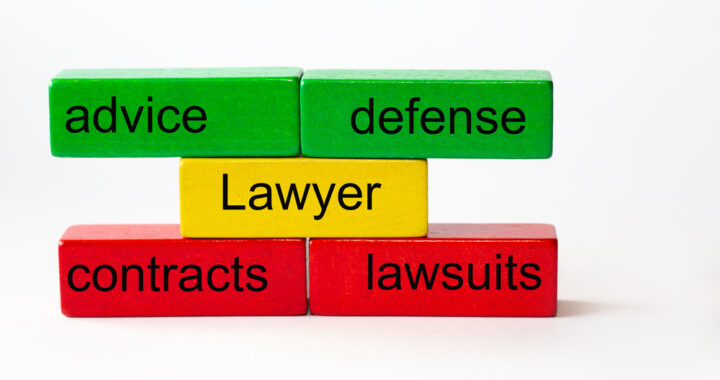 The doctrine of accord and satisfaction lives and breathes in disputes including construction disputes. Unfortunately, a contractor, in the case discussed below, found out the hard way after it cashed checks that were accompanied with a letter that clearly indicated the checks were final payment. Once those payments were cashed, there was no “buyer’s remorse” that would allow it to still pursue disputed amounts. Remember this the next time you accept and cash a payment that says on the check it is full and final payment OR is accompanied by a letter that makes clear the payment is full and final payment. If you cash it, there is no second bite out of the apple, so to speak. If you are not interested in the payment being full and final payment, return the check. If you are not sure, either return the check or inquire and get that response in writing. Don’t put yourself in the position of defending against an accord and satisfaction defense.
The doctrine of accord and satisfaction lives and breathes in disputes including construction disputes. Unfortunately, a contractor, in the case discussed below, found out the hard way after it cashed checks that were accompanied with a letter that clearly indicated the checks were final payment. Once those payments were cashed, there was no “buyer’s remorse” that would allow it to still pursue disputed amounts. Remember this the next time you accept and cash a payment that says on the check it is full and final payment OR is accompanied by a letter that makes clear the payment is full and final payment. If you cash it, there is no second bite out of the apple, so to speak. If you are not interested in the payment being full and final payment, return the check. If you are not sure, either return the check or inquire and get that response in writing. Don’t put yourself in the position of defending against an accord and satisfaction defense.
Even without the doctrine of accord and satisfaction, the contract between the contractor and owner discussed below made clear that contractor’s acceptance of final payment meant that contractor was unconditionally waiving other claims against the owner, further reinforcing that there would be no second bite out of the apple.
The morale:
(1) read the letter that accompanies a check and do NOT cash a check that indicates it is for final payment unless you are prepared to accept that amount; and
(2) read your contract to understand any contractual obligation that kicks-in with the acceptance of final payment.
In Construction Consulting, Inc. v. The District Board of Trustees of Broward College, 47 Fla.L.Weekly D1847a (Fla. 4th DCA 2022), a contractor (construction manager) was in a payment dispute with a public owner regarding separate projects under a master services agreement. The owner sent the contractor a letter with three checks. The letter identified itself as a reconciliation report for the projects and stated it was a summary of the final agreement to reconcile final payment for outstanding invoices. While the checks did not identify any “payment in full” language, the reconciliation report that accompanied the checks made clear the checks were for final payment. There was no ambiguity in this regard. The master services agreement also stated, “Construction Manager’s acceptance of Final Payment shall constitute an unconditional waiver and release of all claims by Construction Manager for additional compensation beyond that provided in the Final Payment.”
The contractor cashed the checks and filed a lawsuit against the owner for the delta it disputed. The owner moved for summary judgment under an accord and satisfaction defense. Summary judgment was entered in favor of the owner. The appellate court affirmed. The appellate court, in affirming, provided a valuable synopsis on the law of accord and satisfaction that is worthy of sharing so that you are not put in the same position as this contractor if you truly dispute a final payment:
Accord and satisfaction is a legal doctrine that has long been a part of Florida contract law.
“An accord and satisfaction results when: (1) the parties mutually intend to effect a settlement of an existing dispute by entering into a superseding agreement; and (2) there is actual performance in accordance with the new agreement.” Compliance with the new agreement discharges the prior obligations.” Thus, “if an offer clearly serves as an accord and satisfaction, and the other party accepts the offer, then he or she is bound to the conditions attached.”
The Florida Supreme Court has declared that “when a claim in controversy is open and unliquidated and the party to whom it is due accepts payment in full it will operate as an accord and satisfaction even though the party to whom paid declares that he takes it only in part satisfaction.” Thus, a party who so accepts a payment tendered in full cannot cabin the legal effect of its acceptance.
By contrast, where the facts do not demonstrate that the parties agreed to resolve a dispute by payment of a set amount, “a partial payment of a legal obligation does not act to satisfy and discharge that obligation.”
The language used by the parties in a transaction is crucial to the creation of an accord and satisfaction. “An accord and satisfaction results as a matter of law only when the creditor accepts payment tendered on the expressed condition that its receipt is deemed to be a complete satisfaction of a disputed issue.” “When a creditor negotiates the tendered check with knowledge of the debtor’s intent, whether through discussions, correspondence, or unambiguous language on the check, he is then bound to the agreement and cannot later turn around and sue for the remaining balance due under the former dispute.” Therefore, “[i]f a creditor does not assent to the condition, then the proper course of action is to return the check. Simply put, the creditor cannot have his cake and eat it too.”
***
Florida courts have thus recognized that a creditor’s acceptance of payment results in an accord and satisfaction where the check itself or an accompanying writing expressly indicates that the check constitutes payment in full of the debtor’s obligations.
Cases finding no accord and satisfaction have focused on ambiguities in transmittal letters and a lack of clarity as to the matters that a tender was supposed to cover.
Construction Consulting, Inc., supra (internal citations omitted).
For more on accord and satisfaction, please review this posting.
Please contact David Adelstein at dadelstein@gmail.com or (954) 361-4720 if you have questions or would like more information regarding this article. You can follow David Adelstein on Twitter @DavidAdelstein1.








